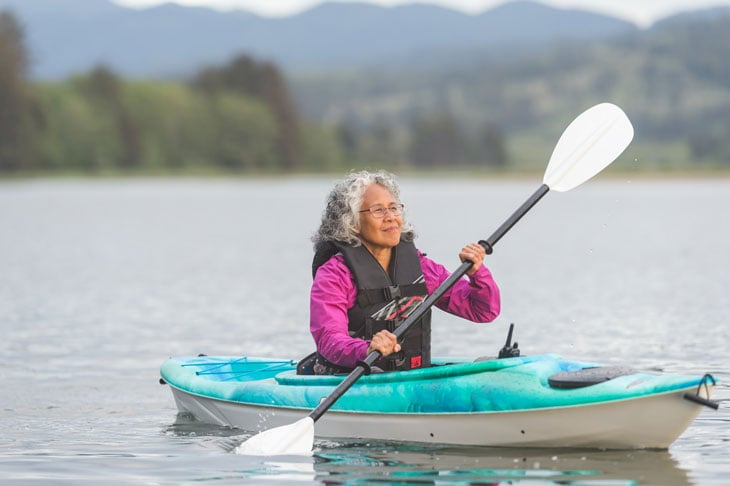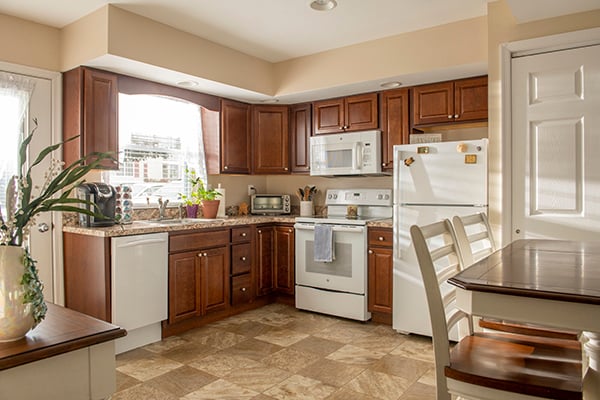
Independent Living and CCRCs: Clearing up the Differences
Updated from the original publication on May 9, 2019.
There are many types of senior living communities, but two of the most popular are Independent Living and Continuing Care Retirement Communities (CCRC), also known as Life Plan Communities. While neither is inherently better than the other, you may find that one will be a better fit for you and your individual needs.The services provided by each type of community is the main difference, but it might not be for the reason you think. Independent living and CCRCs both provide some of the same exact services, but when you investigate the two types of communities further, you get a better understanding of how they’re different.
Independent Living Services
Independent living communities are designed for older adults who want to live full, independent lives, but prefer to live in a setting specifically designed with their needs in mind. Independent living communities come in a variety of housing options, from apartments to stand-alone homes. For the most part, the people who live in independent living communities are able to do as they please, but they are also encouraged to take advantage of the activities and amenities the community has to offer. These communities can offer anything from salons, to fitness centers, to scheduled activities for anyone who’s interested. Most buildings on independent living campuses are also built to accommodate senior's needs and desires. These accommodations can include wider hallways, safety equipped bathrooms, lower cabinets and countertops, and more.
These communities can offer anything from salons, to fitness centers, to scheduled activities for anyone who’s interested. Most buildings on independent living campuses are also built to accommodate senior's needs and desires. These accommodations can include wider hallways, safety equipped bathrooms, lower cabinets and countertops, and more.
The specific amenities available will depend on the community, and may play a big part in the decision process, but there’s one thing that’s universal to all independent living communities: social interaction. Fostering social interaction between residents is a major goal for independent living communities. It’s a main reason why someone who is able to lead an independent life would choose to live in the community. Most independent living communities are designed to make it as easy as possible for the people who live there to interact and become friends with their neighbors. This is because social interaction is a key part of an individual's level of happiness and outlook on life.
CCRC Services
The reason independent living communities and CCRCs are so similar is because CCRCs actually offer independent living options on their campuses. CCRCs offer “continuing care” (hence the name “continuing care retirement communities”), which means residents have the option to increase their level of care without having to move to a new community. Independent living is the lowest level of care at a CCRC, but residents can rest easy knowing that enhanced care is just a few steps away if they ever need it. Higher levels of care you can expect to find at a CCRC include assisted living, personal care, and skilled nursing. A resident will only be moved to one of these areas of care if they need it. So, while independent living is a part of living in a CCRC, it is only one piece of a larger puzzle. This means that most of the features of independent living communities, the activities, minimal interference from management, and especially the social aspect, will also be found at CCRCs. The transitional care is what makes CCRCs unique.
So, while independent living is a part of living in a CCRC, it is only one piece of a larger puzzle. This means that most of the features of independent living communities, the activities, minimal interference from management, and especially the social aspect, will also be found at CCRCs. The transitional care is what makes CCRCs unique.
Independent Living Cost
The services provided aren’t the only differences between the two types of communities; another major difference is cost. Independent living communities are admittedly the less expensive option of the two. Stand-alone independent living communities typically have entrance fees (a one time upfront fee), but these are often much lower than what you would see at a CCRC. Monthly fees are also usually lower in independent living communities, as they do not cover growing medical concerns. These monthly fees can cover services like utilities, dining, maintenance, and housekeeping, as well as the cost of the planned activities and amenities the community offers.
CCRC Cost
Because of the way CCRCs operate, they tend to be significantly more expensive. Most CCRCs require an upfront entrance fee as well as monthly service fees. These costs cover a move into higher levels of care. Although these costs are higher than a stand-alone independent living community, you can rest assured that should you ever need a higher level of care, it is available to you right in your community. Costs vary drastically by each community, so it is hard to estimate CCRC costs as a whole. The best way to find out what type of costs you will be accruing is to talk to the community you are interested in. While CCRCs are more expensive, many non-profit organizations that run them, like Presbyterian Senior Living, have special funds set aside to help residents who outlive their resources.
Options for Spouses
CCRCs are also generally considered a more attractive option for married couples due to their transitional care options. A spouse won’t have to worry about their significant other leaving the community they call home just because they need a higher level of care. Spouses can continue to stay with the community, but in a separate wing, floor, or perhaps building. In independent living communities, this would be impossible.
The key difference between the two types of communities is simple; a CCRC offers multiple levels of care for residents, and the means to transition between them while remaining in the same community, while independent living communities are solely focused on providing meaningful, independent living opportunities. Both types of communities are great options for older adults looking to live fulfilling lives. Taking a look at your long-term personal health, while making sure you plan for the unexpected, can help you make the right individual choice.
To make sure you're asking the right questions when looking at multiple senior communities, download the free Senior Community Evaluation Checklist below.


